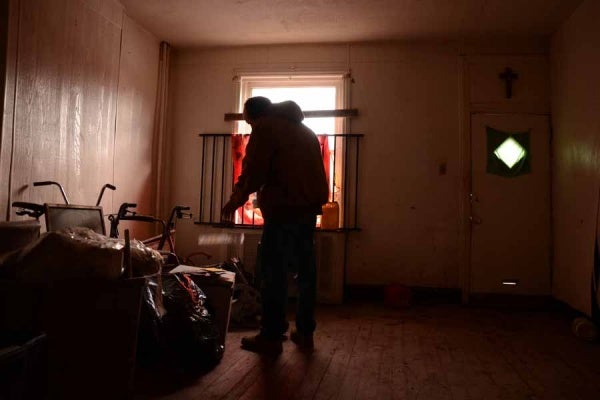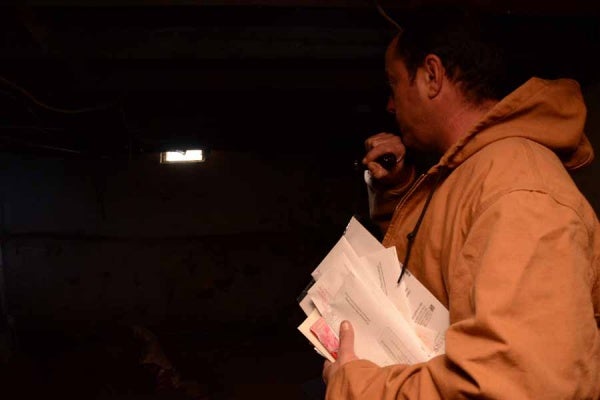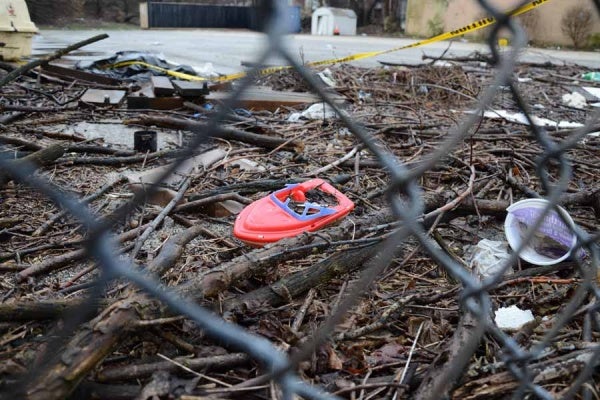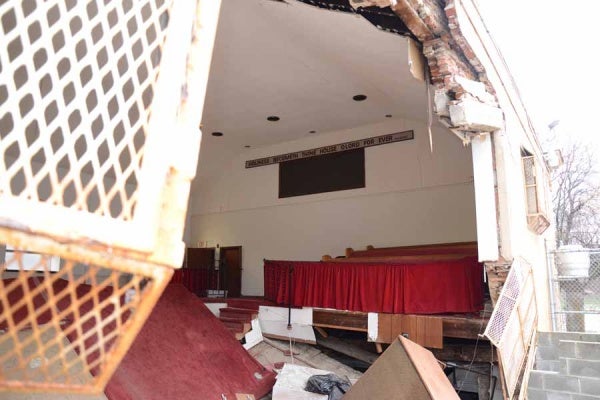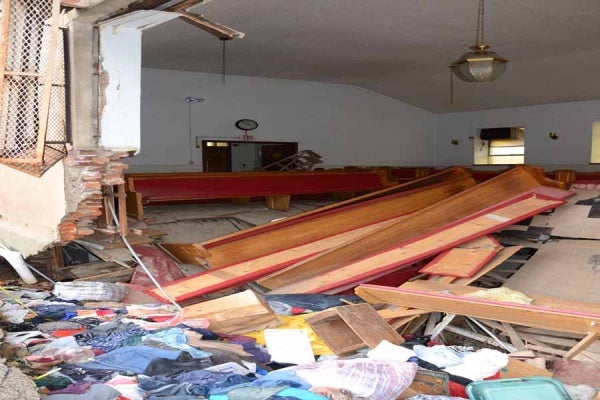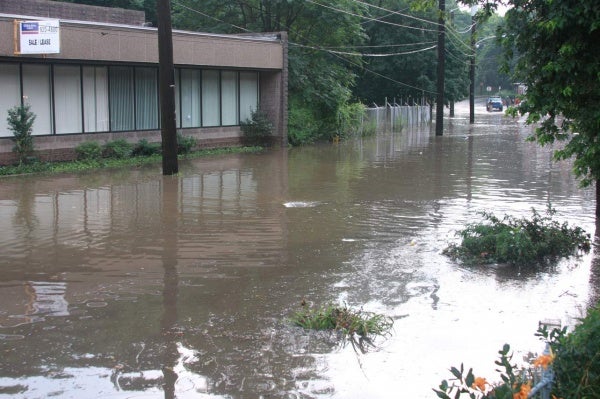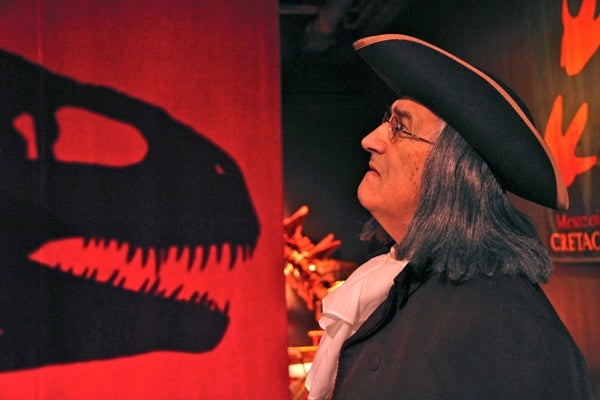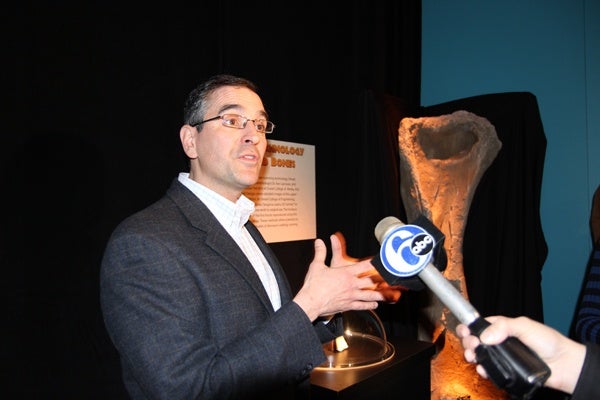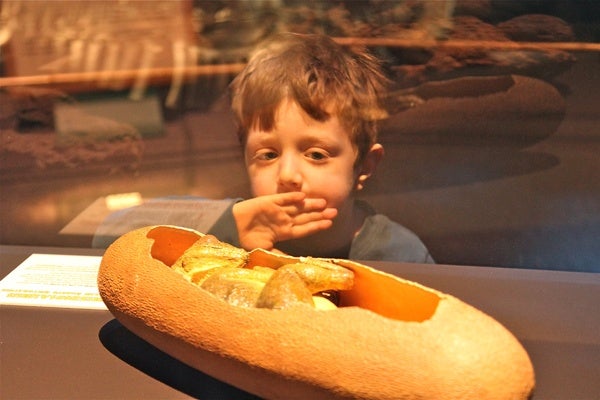Rare dinosaur find expands Franklin Institute exhibit
Midway through the run of the Giant Mysterious Dinosaurs at the Franklin Institute, the exhibition received one more bone.
Scientists from Drexel University and the Academy of Natural Sciences arrived to prop up a 5-foot humerus from a newly discovered dinosaur species.
The Paralititan was a massive vegetarian — probably 80 feet long, 2.5 stories tall, weighing as much as eight elephants. It would dwarf the other dinosaurs whose skeletons are on temporary display at the Franklin Institute.
Dr. Ken Lacovara installed a plaster cast of the humerus — or arm bone — as part of the exhibition.
“This has features not seen in any other dinosaur based on features of this bone,” said Lacovara, a paleontologist at Drexel. “This is a forelimb. The humerus and femur are really good bones to determine the mass of an animal. We can learn a lot from the dinosaur by this bone.”
Lacovara discovered the bones, 95 million years old, of the then-unknown species in Egypt. They were processed and studied in Philadelphia, then returned. They have never been on public display outside Egypt.
During their stay in Philadelphia, the bones were laser-scanned into a computer model. Using 3-D prototype printers, Lacovara can create research-quality replicas at a fraction of the original size. Next to a massive plaster cast of the humerus is its miniaturized twin, just a few inches long.
With those miniature bone replicas, scientists can build little dinosaur robots.
“When we try to test out our biomechanical models on giant dinosaurs, that’s physically impossible,” said Lacovara. “Now we can print bones at one-tenth scale and test out hypotheses without getting hernias.”
Using those robots, scientists can understand better how gigantic dinosaurs flexed, fought, and reproduced.
Combination tickets are now available, allowing visitors to see dinosaur skeletons at the Franklin, then watch scientists work on fossilized bones at the Academy of Natural Sciences.
WHYY is your source for fact-based, in-depth journalism and information. As a nonprofit organization, we rely on financial support from readers like you. Please give today.



